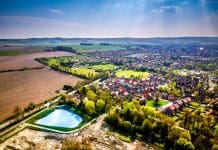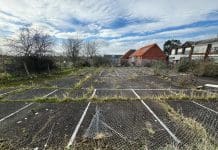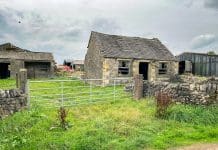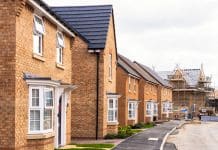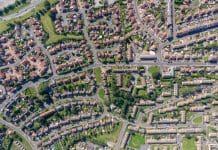A government initiative that would enable developers to build on parts of the UK’s green belt is expected to go ahead next month
Green belt protections could be removed under a new government initiative. The plans would see protections on some parts of the UK’s green belt removed and new areas of protected land created elsewhere.
It is expected the move, which will be given the green light next month, will be backed in a White Paper in December.
The government is under increasing pressure to meet its own housebuilding targets to construct a million new homes by 2020. To do this it needs to have land available to build upon. Green belts were first put into place in the 1950s. They aimed to prevent urban sprawl and cover about 13 per cent of England.
Redefining green belt
The issue of green belt development is one that has been widely debated, meaning this plan could prove controversial. It challenges the idea green belt land is of equal value and acknowledges while some land should be protected much of it could be made available for development without environmental concerns.
Charles Hesse, land and planning director at land brokers Aston Mead, said: “If this means another important but currently unprotected piece of land receives a level of protection it didn’t previously have, that can only be a good thing.
“Ultimately, it’s a sensitive way of protecting rural land, while giving councils the powers to reach their ambitious planning targets.”
Councils are expected to be encouraged by Communities Secretary Sajid Javid to allow more development on green belt land. He said politicians should not stand in the way of local authorities wanting to build on green belt if plans were sensible and robust.
However, the Campaign to Protect Rural England (CPRE) said the decision to build on green belt land was disconcerting.
Paul Miner, planning campaign manager, said: “Once it’s gone, it’s gone forever. It’s generally found that the green belt is performing an important function in stopping urban sprawl.”
The CPRE is instead an advocate of brownfield development and streamlining the planning process. However, Hesse said demand for homes is so high in some parts of the country that local councils should have the freedom to build as required.
“In fact, there are already rules that allow local authorities to do this, but they are rarely used because of disagreements over how green belt land is defined,” he explained.
Hesse said green belt should be genuinely defined as being of environmental, historic or ecological importance.
“If it’s not carefully selected and is something which could in fact be perfectly good building land, then we will simply be back where we started,” he said.
“Nevertheless, outright opposition to all building on green belt land is no longer tenable and it’s good to see that ministers are at long last waking up to this fact.”







